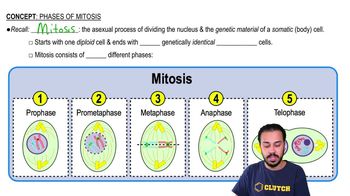Multiple Choice
The presence of an epiphyseal plate indicates that:
108
views
 Verified step by step guidance
Verified step by step guidance Verified video answer for a similar problem:
Verified video answer for a similar problem:



 4:46m
4:46mMaster Introduction to the Cell Cycle with a bite sized video explanation from Bruce Bryan
Start learning